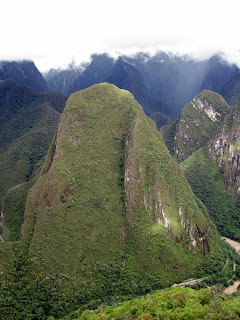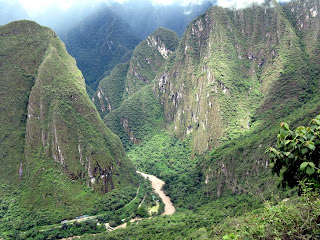










Panama Canal & Ecuador – Travel Update No. 3
Dear Family and Friends,
Here are some of the pictures I could not upload last time of our transit through the Panama Canal. Hope you enjoy your look at the locks.
After a very calm sail yesterday down the west coast of South America, we arrived in Manta, Ecuador’s second-largest city and the beginning of a string of beaches the Ecuadorian tourist industry promotes as the “Ruta del Sol”, the Route of the Sun. So naturally it was raining when we docked and rained on and off all morning and was cloudy all afternoon. Look at it this way, it probably kept me from over indulging in the sun which is so intense here at the Equator.
Named for that imaginary line which encircles the center of our earth, Ecuador is nothing like I imagined it to be. It is dry and barren and although there are a range of mountains inland with several still active volcanoes, the west coast is devoid of the dense flora and fauna of most tropical countries to the north of here. The city has some nice buildings but it is pretty much a ragged looking, impoverished country. Unfortunately, there is trash everywhere along the sides of the road and in the empty fields and around the ramshackle houses we saw in town. Fortunately, we left the city and took a tour out to the county to the hilltop town of Montecristi, a famous artisan community where we visited a button manufacturing company, a burlap manufacturing company and a series of shops where the incorrectly named “Panama hats” are handmade.
O.K., a BUTTON manufacturing company? Yawn, right? Oh, contraire, senor. It was fascinating. At this one factory (kind of a run-down ADvent Supply only smaller), they make over 12 million buttons a year out of Ivory Nut. And what the heck is an Ivory Nut? Glad you asked. It is a nut that looks about the size, shape and color of an avocado seed but come from a spiny coconut about the size of a basketball. The nuts inside (a dozen or so) mature in about 12 years and when dried properly become as hard as real ivory. The nuts are then sliced on a table saw and then a raw plug is punched out to roughly the size of the final button needed. The plugs are then cleaned and polished in a tumbler then put in a machine that grinds the plugs down to the final size and contour and punched with either two or four holes. The buttons are then stained or polished one final time and, taa-daa, a custom, sturdy shirt and/or blouse closure system protects the modesty of male and female alike around the world….or not.
Now if that was not thrilling enough excitement for one day, we were whisked away to the burlap factory. I know, be still your heart, but it was interesting seeing how they convert this raw hemp into a woven miracle capable of holding and protecting 200 pounds of potatoes or coconuts or bananas or just about anything under the sun from the most strenuous of circumstances around the world. It is a somewhat fascinating process completed by hand and antiquated combing, threading and looms which would make an OSHA inspector faint. Pics to follow.
The “Panama Hat” was actually never made in Panama. It was worn there by Teddy Roosevelt in several pictures during his tour of the canal under construction and was so mis-named by the early 1900’s press. That rakish and popular hat was actually made in Montecristi, Ecuador and you do not have a genuine Panama hat unless it is made in Montecristi. These hats are made in several quality levels but the three primary categories are “Regular”, “Fine” and “Super Fine”. It refers to the tightness of the hand fashioned weave. Each hat is custom made by hand and “Super Fine” hats take up to three weeks to make. The finest work is white, soft and supple, has a weave that is so tight you cannot see light through it and it will hold water. They can even be rolled up and will recover to its original shape. You can quickly mold a Panama hat to the crown shape of your liking in seconds and it will stay that way until you change it. Panama hats have the reputation for “lasting a lifetime….or more”.
Original Panama hats, made by Montecristi artisans, that are at the top of the “Super Fine” scale sell on Fifth Avenue in NYC for as much as $ 20,000.00 at the finest clothiers. My new Panama did not cost that much.
We sail tonight at 8:00 PM for Salaverry (Trujillo), Peru, our last stop before Lima and our three-day trip up to the ancient Inca city of Machu Pichu. You will not hear from us for several days until we finish that tour, but I promise you our next post might be a little more exciting than buttons, burlap and Panama hats.
God Bless you all,
Jud and Vicki




































